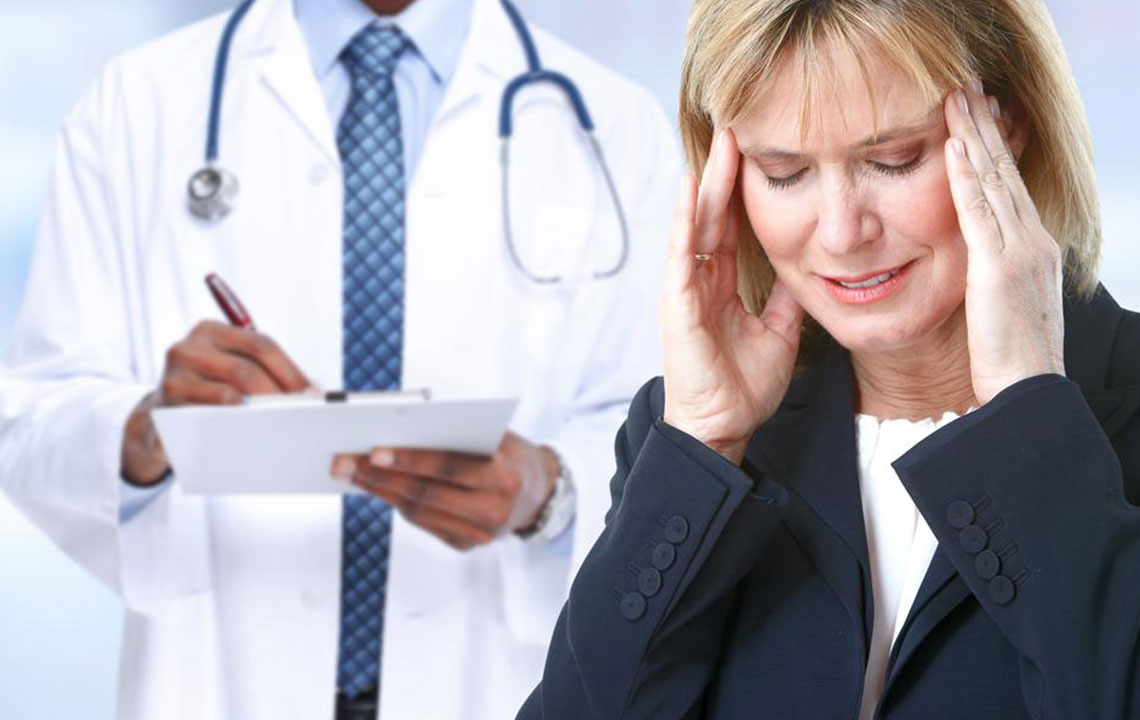Migraine – Symptoms, Causes, Treatment And Prevention
Migraines are recurring, splitting headaches, often confined to one side of the head. They can be accompanied with symptoms such as sudden blind spots, flashes of light, and a tingling sensation on one side of the face, arm or leg. A migraine attack can last for hours, however, severe migraine episodes can go on for days. Based on the statistics drawn by the American Migraine Association, this condition currently affects more than 36 million individuals in the country alone.

What are the signs and symptoms of a migraine?
Typically, the symptoms of a migraine begin during childhood, adolescence or early twenties. This condition moves through 4 stages, i.e., prodrome, aura, attack, and post-drome. Since every patient is different, they may not endure all stated stages.
- Prodrome – These can be described as warning signs that start projecting a day or two before the migraine strikes. The prodrome stage includes symptoms like constipation, food cravings, erratic mood swings, neck stiffness, aura, increased thirst, and urination.
- Aura – Auras are generally visual disturbances which include witnessing flashes of light and zigzag vision. At times, auras can also comprise sensory (touching sensations), motor (movement), and verbal (speech) disturbances. These symptoms can last anywhere between 20 and 60 minutes. Vision loss, pins and needles or numbness in the arm or leg, difficulty while speaking, hearing noises or music, and uncontrollably shaking are some other forms of aura that could ensue.
- Attack – In this stage, the migraine headache hits, lasting anywhere from 4 to 72 hours, if medical help is not taken. The frequency of migraine attacks differs across individuals. It could be a rare occurrence or happen numerous times a month. During the attack, the person may experience a throbbing pain in one or both sides of the head, heightened sensitivity to light, touch or smell, nausea, vomiting, lightheadedness, and blurred vision.
- Postdrome – The final stage of a migraine, postdrome can make a person feel exhausted or surprisingly euphoric. In the following day, feelings of confusion, weakness, dizziness, sensitivity to light and sound, and moodiness could continue.
Depending on the type of symptoms experienced, one’s treatment plan is designed. Patients with mild migraine instances might just be prescribed with a painkiller. Conversely, those with debilitating symptoms might require severe migraine help.
What are the causes of a migraine?
Fluctuations in the brainstem and its communication with the trigeminal nerve, one of the primary pain pathways could cause migraine attacks. Likewise, a chemical imbalance in the brain involving serotonin which is instrumental for pain regulation in the nervous system could also be responsible for the onset of a migraine. However, researchers aren’t certain what compels the brain functions to react this way. Although, strong speculations point towards several genetic and environmental factors.
It is essential to know what triggers migraine episodes. Identifying what sets off this condition can allow one to seek the best treatment, especially in severe migraine cases where immediate help is required. The following are some causes of a migraine.
- Certain types of foods such as the processed or salty items
- Skipping meals
- Caffeinated beverages
- Alcohol
- Stress
- Sun glare or other forms of bright lights
- Strong or pungent smells
- Physical exertion
- Changes in the climate
- Certain types of medications such as vasodilators and contraceptives
- Hormonal changes in women
How is a migraine treated?
To treat a migraine, usually two types of drugs are used, i.e., pain-relieving and preventive medications.
Pain relieving medications include the following.
- Painkillers
- Ergots
- Anti-nausea medications
- Triptans
- Opioids
- Glucocorticoids
If the patient requires severe migraine help, then preventive medications will be used along pain-relievers. These include the following.
- Beta-blockers
- Calcium channel blockers
- Anti-seizure drugs
- Tricyclic antidepressants
- Botox
Whether one requires severe migraine help or not, it is important to remember that the above-mentioned drugs are only to be consumed if they are prescribed by a doctor.
How can one prevent migraine attacks?
- People in the need of severe migraine help can manage their condition by preventing triggers. However, avoiding triggers isn’t always feasible. Therefore, they can adopt the following lifestyle changes and coping mechanisms to lower the frequency of severe migraine attacks.
- Learning to cope (LTC) strategies focus on desensitizing the triggers by steadily exposing them to the patient in a controlled pattern. LTC can be also teamed up with cognitive behavioral therapy (CBT) for increasing the resistance against the triggers.
- Exercising on a daily basis can lower mental fatigue, however, one should refrain from over-exerting their bodies and stick to low-intensity workouts such as brisk walks, cycling, and swimming.
- Religiously following a daily schedule including regular sleeping and waking patterns along with proper meal times can help deal with stress in a better manner.
Tag – severe migraine help




